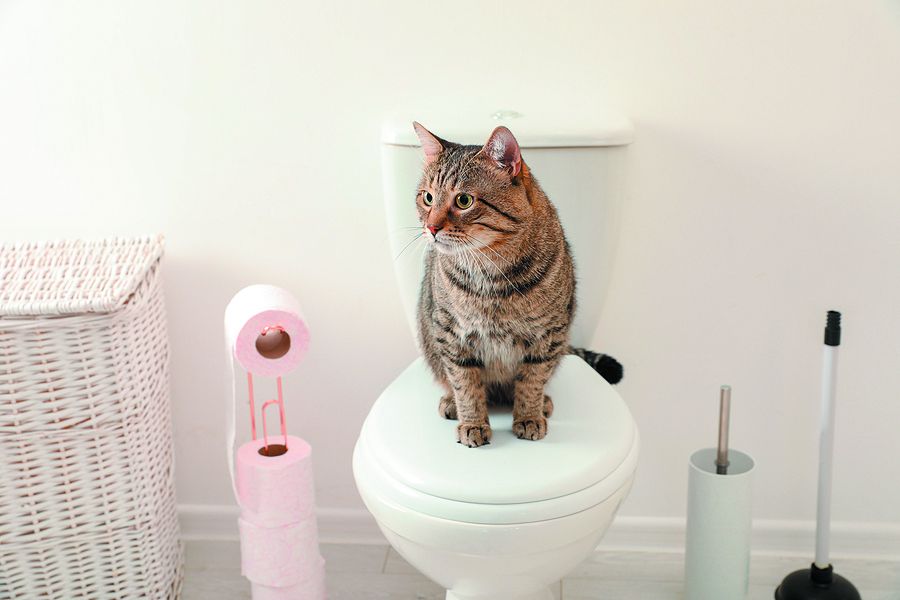Prevent Plumbing Problems: Never Flush Cat Poop Down Your Toilet - Professional Guidance
Prevent Plumbing Problems: Never Flush Cat Poop Down Your Toilet - Professional Guidance
Blog Article
The article author is making a few great pointers related to Don’t flush cat feces down the toilet overall in this article further down.

Intro
As feline owners, it's necessary to be mindful of how we dispose of our feline friends' waste. While it might appear convenient to flush pet cat poop down the commode, this method can have harmful consequences for both the setting and human wellness.
Environmental Impact
Flushing pet cat poop presents harmful virus and bloodsuckers into the water supply, posturing a substantial danger to aquatic ecological communities. These pollutants can negatively influence aquatic life and concession water high quality.
Health Risks
Along with environmental concerns, purging cat waste can additionally present health threats to people. Feline feces may have Toxoplasma gondii, a parasite that can cause toxoplasmosis-- a possibly severe ailment, especially for pregnant ladies and individuals with damaged immune systems.
Alternatives to Flushing
Thankfully, there are more secure and more accountable methods to take care of pet cat poop. Consider the following options:
1. Scoop and Dispose in Trash
One of the most typical approach of getting rid of pet cat poop is to scoop it right into a biodegradable bag and throw it in the trash. Make sure to use a devoted trash inside story and dispose of the waste promptly.
2. Usage Biodegradable Litter
Choose eco-friendly cat clutter made from products such as corn or wheat. These trashes are eco-friendly and can be safely taken care of in the garbage.
3. Bury in the Yard
If you have a yard, think about hiding feline waste in an assigned area away from vegetable gardens and water resources. Make certain to dig deep adequate to prevent contamination of groundwater.
4. Install a Pet Waste Disposal System
Invest in a pet waste disposal system especially made for pet cat waste. These systems utilize enzymes to break down the waste, decreasing odor and ecological impact.
Final thought
Liable animal possession prolongs beyond providing food and sanctuary-- it likewise involves correct waste monitoring. By refraining from flushing pet cat poop down the bathroom and choosing alternative disposal approaches, we can lessen our environmental footprint and shield human wellness.
Why Can’t I Flush Cat Poop?
It Spreads a Parasite
Cats are frequently infected with a parasite called toxoplasma gondii. The parasite causes an infection called toxoplasmosis. It is usually harmless to cats. The parasite only uses cat poop as a host for its eggs. Otherwise, the cat’s immune system usually keeps the infection at low enough levels to maintain its own health. But it does not stop the develop of eggs. These eggs are tiny and surprisingly tough. They may survive for a year before they begin to grow. But that’s the problem.
Our wastewater system is not designed to deal with toxoplasmosis eggs. Instead, most eggs will flush from your toilet into sewers and wastewater management plants. After the sewage is treated for many other harmful things in it, it is typically released into local rivers, lakes, or oceans. Here, the toxoplasmosis eggs can find new hosts, including starfish, crabs, otters, and many other wildlife. For many, this is a significant risk to their health. Toxoplasmosis can also end up infecting water sources that are important for agriculture, which means our deer, pigs, and sheep can get infected too.
Is There Risk to Humans?
There can be a risk to human life from flushing cat poop down the toilet. If you do so, the parasites from your cat’s poop can end up in shellfish, game animals, or livestock. If this meat is then served raw or undercooked, the people who eat it can get sick.
In fact, according to the CDC, 40 million people in the United States are infected with toxoplasma gondii. They get it from exposure to infected seafood, or from some kind of cat poop contamination, like drinking from a stream that is contaminated or touching anything that has come into contact with cat poop. That includes just cleaning a cat litter box.
Most people who get infected with these parasites will not develop any symptoms. However, for pregnant women or for those with compromised immune systems, the parasite can cause severe health problems.
How to Handle Cat Poop
The best way to handle cat poop is actually to clean the box more often. The eggs that the parasite sheds will not become active until one to five days after the cat poops. That means that if you clean daily, you’re much less likely to come into direct contact with infectious eggs.
That said, always dispose of cat poop in the garbage and not down the toilet. Wash your hands before and after you clean the litter box, and bring the bag of poop right outside to your garbage bins.
https://trenchlesssolutionsusa.com/why-cant-i-flush-cat-poop/

I'm just very enthusiastic about Can You Flush Cat Poop Down The Toilet? and I really hope you liked our page. Don't hesitate to take a moment to share this content if you enjoyed it. We value reading our article about Don’t flush cat feces down the toilet.
Call Today Report this page